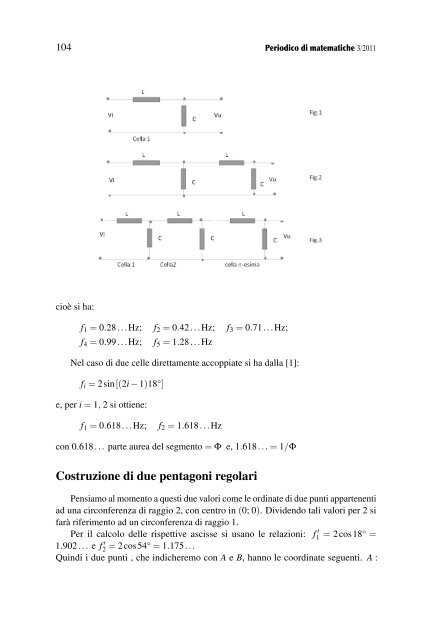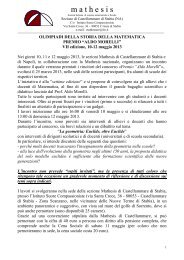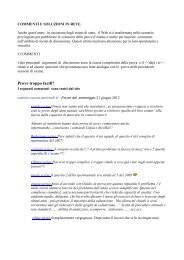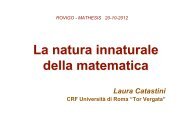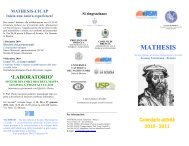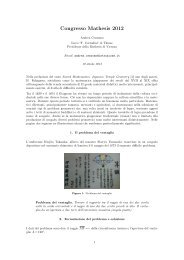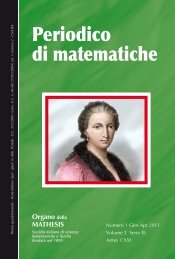Periodico di matematiche - Mathesis
Periodico di matematiche - Mathesis
Periodico di matematiche - Mathesis
Create successful ePaper yourself
Turn your PDF publications into a flip-book with our unique Google optimized e-Paper software.
104 <strong>Perio<strong>di</strong>co</strong> <strong>di</strong> <strong>matematiche</strong> 3/2011<br />
104 <strong>Perio<strong>di</strong>co</strong> <strong>di</strong> <strong>matematiche</strong> 3/2011<br />
cioè si ha:<br />
f1 = 0.28...Hz; f2 = 0.42...Hz; f3 = 0.71...Hz;<br />
f4 = 0.99...Hz; f5 = 1.28...Hz<br />
Nel caso <strong>di</strong> due celle <strong>di</strong>rettamente accoppiate si ha dalla [1]:<br />
fi = 2sin[(2i − 1)18°]<br />
e, per i = 1, 2 si ottiene:<br />
f1 = 0.618...Hz; f2 = 1.618...Hz<br />
con 0.618... parte aurea del segmento = Φ e, 1.618... = 1/Φ<br />
Costruzione <strong>di</strong> due pentagoni regolari<br />
Pensiamo al momento a questi due valori come le or<strong>di</strong>nate <strong>di</strong> due punti appartenenti<br />
ad una circonferenza <strong>di</strong> raggio 2, con centro in (0; 0). Dividendo tali valori per 2 si<br />
farà riferimento ad un circonferenza <strong>di</strong> raggio 1.<br />
Per il calcolo delle rispettive ascisse si usano le relazioni: f ′ 1 = 2cos18° =<br />
1.902... e f ′ 2 = 2cos54° = 1.175...<br />
Quin<strong>di</strong> i due punti , che in<strong>di</strong>cheremo con A e B, hanno le coor<strong>di</strong>nate seguenti. A :<br />
✐<br />
✐


